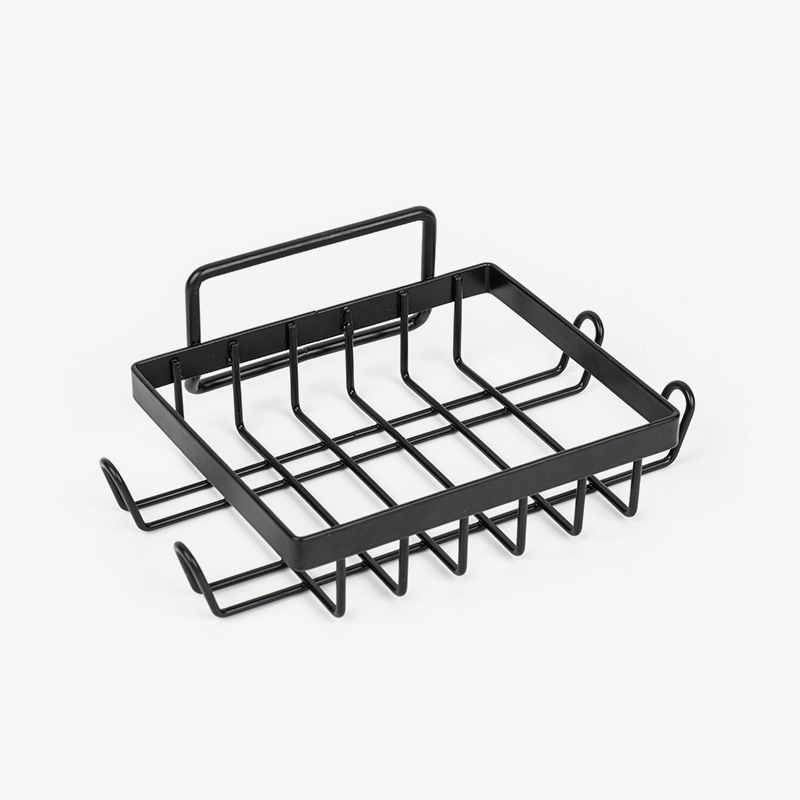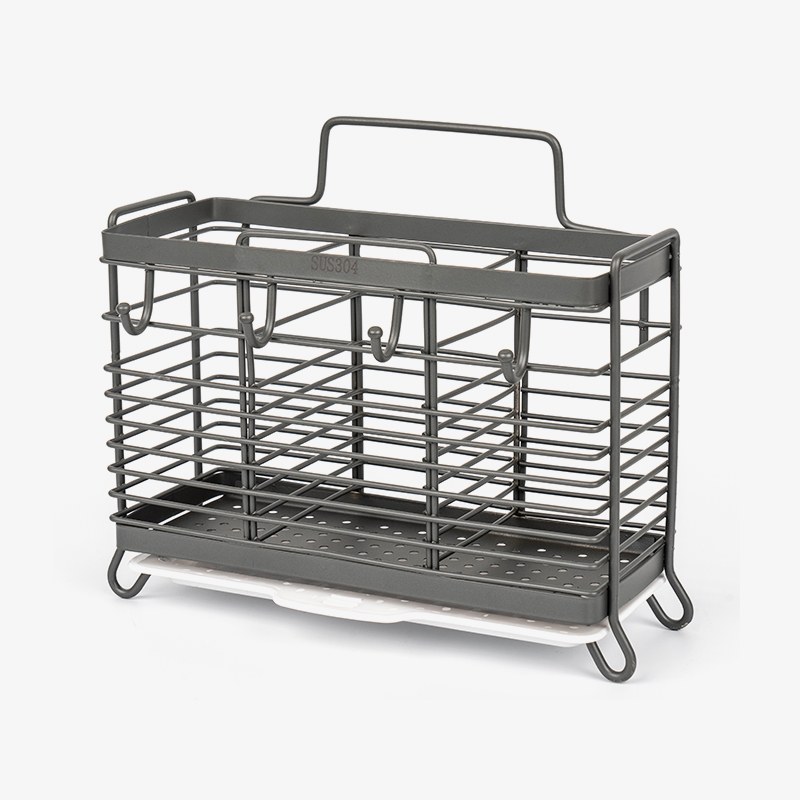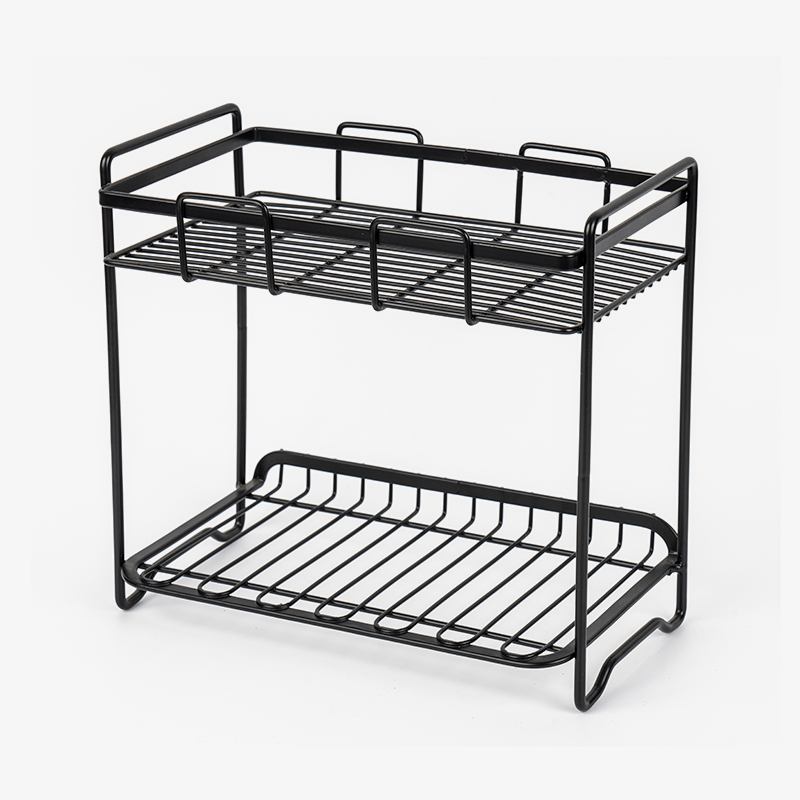Content
- 1 What’s the 10-Second Daily Step That Stops Scum Before It Starts?
- 2 How Does Controlling Bathroom Humidity Keep Scum Away?
- 3 What’s the Weekly “Quick Rinse” That Prevents Buildup?
- 4 Do You Need to Maintain Carbon Steel’s Protective Layer to Repel Scum?
- 5 What Common Habits Make Scum Come Back Faster?
- 6 How Do You Adjust Prevention for a Kitchen Carbon Steel Soap Rack?
- 7 Carbon Steel Soap Rack Soap Scum Prevention Checklist
Once you’ve spent time cleaning soap scum off your carbon steel soap rack, the last thing you want is to repeat the process a week later. The good news is that preventing scum doesn’t require extra effort—just consistent, small habits that target the root causes: leftover soap residue, lingering moisture, and unmaintained metal. Below’s a detailed breakdown of how to keep scum at bay, while also protecting your carbon steel from rust.
What’s the 10-Second Daily Step That Stops Scum Before It Starts?
The most effective way to prevent soap scum is to stop it from forming in the first place—and that starts with a tiny daily action.
Every time you finish using the soap, take 10 seconds to wipe the entire surface of the carbon steel rack with a dry, soft cloth (microfiber works best). This wipes away invisible soap suds and water droplets that would otherwise sit on the metal. Over time, those tiny droplets mix with hard water minerals (like calcium) and dry into tough scum—but a quick wipe eliminates that risk. Think of it like brushing your teeth: small daily effort avoids bigger problems later. Even if you’re in a hurry, this step takes almost no time and cuts down on future cleaning by half.
How Does Controlling Bathroom Humidity Keep Scum Away?
If your carbon steel soap rack is in the bathroom, humidity is one of the biggest culprits behind scum buildup. Here’s why: after a shower, the air fills with moisture, which settles on the rack and mixes with any leftover soap residue. This combination creates a sticky film that hardens into scum faster than it would in a dry space.

To fix this, focus on reducing humidity right after using the bathroom:
- Turn on the exhaust fan and leave it running for 20–30 minutes after showering. This pulls moist air out of the room before it can settle on the rack.
- If you don’t have an exhaust fan, open a window (even a crack) to let fresh air circulate.
- For extra-steamy bathrooms, keep a small dehumidifier near the sink. It won’t just help the soap rack— it’ll also prevent mold in other parts of the room.Lower humidity means less moisture on the carbon steel, so soap residue has no chance to bond and form scum.
What’s the Weekly “Quick Rinse” That Prevents Buildup?
Even with daily wiping, tiny bits of soap or mineral deposits can hide in the small gaps or pores of the carbon steel rack. These bits add up over time and turn into scum if left unchecked—but a 1-minute weekly rinse fixes that.
Once a week, hold the carbon steel rack under warm (not hot) running water. Let the water flow over every part of the rack, including the gaps between bars (if it has them). You don’t need soap—just water is enough to wash away hidden residue. After rinsing, dry the rack immediately with a clean towel. Hot water can damage any protective coating on the carbon steel, so stick to warm. This quick rinse is like a “reset” for the rack, keeping it free of buildup without extra work.
Do You Need to Maintain Carbon Steel’s Protective Layer to Repel Scum?
Most carbon steel soap racks come with a thin protective layer (often food-safe oil or a clear sealant) to resist moisture and rust. But this layer wears off over time with use and cleaning—and when it does, the metal becomes more prone to both rust and scum. Maintaining this layer helps repel soap residue and keeps the rack in good shape.
Here’s how to do it:
- Every 2–3 weeks, after cleaning the rack (and drying it completely), grab a clean cloth and a small amount of food-safe mineral oil (or the oil recommended for carbon steel, if you have it).
- Pour 1–2 drops of oil onto the cloth and rub it evenly over the entire surface of the rack. Make sure to cover gaps and edges—these are the spots where moisture and scum often hide.
- Wipe off any excess oil with a dry part of the cloth. The rack should feel smooth, not greasy. Too much oil can attract dust or extra soap residue.
This protective layer creates a barrier between the carbon steel and soap/water, making it harder for scum to stick. It also adds extra rust protection—double win.
What Common Habits Make Scum Come Back Faster?
Sometimes, even with good intentions, small mistakes can undo your prevention efforts. Avoid these two habits to keep scum away:
- Leaving wet soap directly on the rack: If you set a dripping wet bar of soap on the carbon steel, it will sit in its own suds. Those suds seep into the metal’s pores and dry into scum. Instead, use a separate draining soap dish—this keeps the soap dry and the rack free of excess moisture.
- Using heavy, moisturizing soaps: Soaps with lots of lotions, oils, or fragrances leave more residue than plain, mild bar soaps. That residue is thicker and stickier, making it easier to form scum. Opt for simple, fragrance-free soaps if you want to cut down on buildup.
How Do You Adjust Prevention for a Kitchen Carbon Steel Soap Rack?
If your carbon steel soap rack is in the kitchen (for dish soap bars), the prevention steps are slightly different—since kitchen humidity is lower, but food particles can add to buildup.
- Wipe with a damp cloth first: After using the soap, wipe the rack with a damp cloth to remove any food bits (like grease or crumbs) before drying it. Food particles mix with soap residue and form a thicker scum.
- Avoid placing near the sink sprayer: If the rack is next to the sink, make sure it doesn’t get splashed with water every time you use the sprayer. Constant splashing keeps the rack wet, leading to scum. Move it a few inches away or use a small tray under it to catch water.
Whether in the bathroom or kitchen, the core rule stays the same: keep the carbon steel dry, and scum won’t stand a chance.
Carbon Steel Soap Rack Soap Scum Prevention Checklist
|
Task Frequency |
Specific Actions |
Key Reminders |
|
|
Daily |
1. After using soap, wipe the soap rack surface with a dry microfiber cloth2. Ensure the soap is placed in a draining soap dish (no direct contact with the rack) |
Focus on wiping gaps to avoid leftover soap suds |
|
|
Weekly |
1. Rinse the rack with warm water (no dish soap needed)2. Dry the rack immediately with a clean towel after rinsing3. Check for tiny rust spots or residue on the rack |
Water temperature should not exceed 40℃ to avoid damaging the protective layer |
|
|
Every 2–3 Weeks |
1. After cleaning and drying the rack, take 1–2 drops of food-safe mineral oil2. Use a dry cloth to spread the oil evenly over the entire rack surface3. Wipe off excess oil to ensure the surface is not greasy |
Prioritize colorless and odorless mineral oil to avoid dust buildup |
|
|
Long-Term Notes |
1. For bathroom use: Run the exhaust fan for 20–30 minutes after showering2. For kitchen use: Keep the rack away from the sink sprayer3. Avoid using soaps with heavy lotions/fragrances |
Humidity control is key to scum prevention; choosing the right soap reduces residue |
|



 Español
Español عربى
عربى






